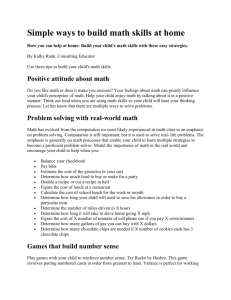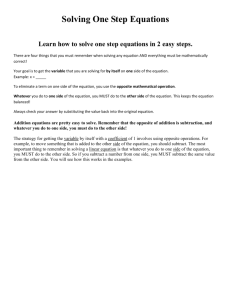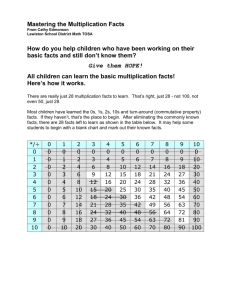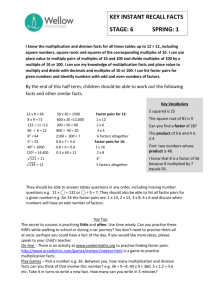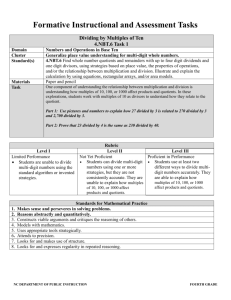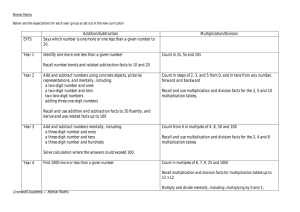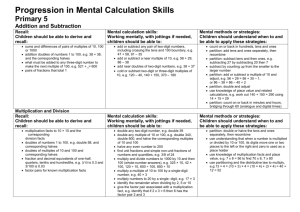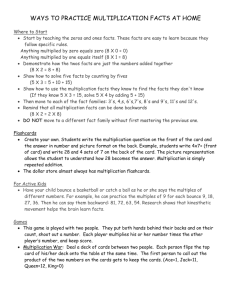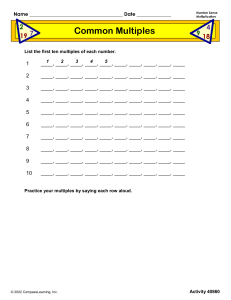Multiplication & Division Strategies: Math Learning Guide
advertisement
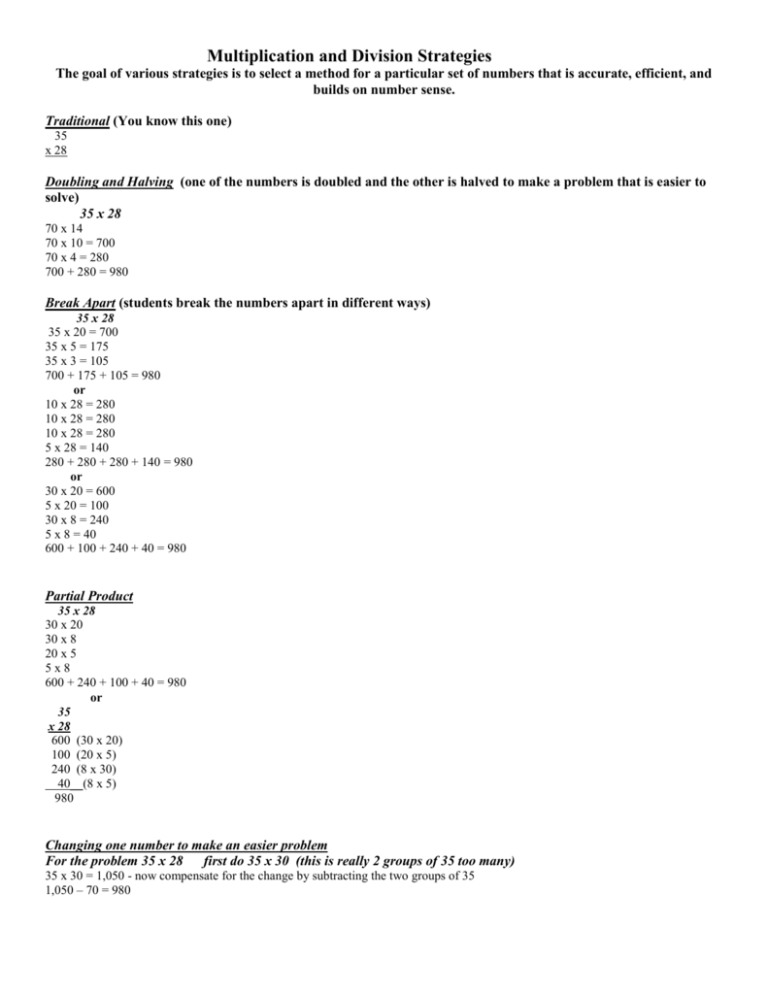
Multiplication and Division Strategies The goal of various strategies is to select a method for a particular set of numbers that is accurate, efficient, and builds on number sense. Traditional (You know this one) 35 x 28 Doubling and Halving (one of the numbers is doubled and the other is halved to make a problem that is easier to solve) 35 x 28 70 x 14 70 x 10 = 700 70 x 4 = 280 700 + 280 = 980 Break Apart (students break the numbers apart in different ways) 35 x 28 35 x 20 = 700 35 x 5 = 175 35 x 3 = 105 700 + 175 + 105 = 980 or 10 x 28 = 280 10 x 28 = 280 10 x 28 = 280 5 x 28 = 140 280 + 280 + 280 + 140 = 980 or 30 x 20 = 600 5 x 20 = 100 30 x 8 = 240 5 x 8 = 40 600 + 100 + 240 + 40 = 980 Partial Product 35 x 28 30 x 20 30 x 8 20 x 5 5x8 600 + 240 + 100 + 40 = 980 or 35 x 28 600 (30 x 20) 100 (20 x 5) 240 (8 x 30) 40__(8 x 5) 980 Changing one number to make an easier problem For the problem 35 x 28 first do 35 x 30 (this is really 2 groups of 35 too many) 35 x 30 = 1,050 - now compensate for the change by subtracting the two groups of 35 1,050 – 70 = 980 Area (Arrays)- Numbers can be broken up many ways. This strategy develops multiplication by multiples of 10 and 100 (if I know 3x8 then I know 30x8), the distributive property (used extensively in algebra), supports geometry concepts of area, and can show the relationship between multiplication and division.) This example shows an array with numbers broken apart by place value. (35 x 28) 30 5 8 30x20=600 30x8=240 20 5x20=100 40 30 x 20 = 600 30 x 8 = 240 5 x 20 = 100 5 x 8 = 40 Total 980 Cluster Problems-(helps show relationship between multiplication and division. Uses multiples of 10 and 100. Uses the idea “I start with what I know to get to what I don’t know.”) 35 x 28 35 x 10 = 350 35 x 20 = 700 35 x 10 =350 – 2 groups of 35 = 280 700 + 280 = 980 OR 35 x 10 = 350 35 x 10 = 350 35 x 5 = 175 (this is half of 350) 35 x 1 = 35 35 x 2 = 70 Total 980 350 ÷ 10 = 35 700 ÷ 20 = 35 If I add 350 and 700 = 1,050 which is 30 groups of 35. I can take off 2 groups of 35 for a total of 70 off of 1,050. Now I have 980. Lattice 35 x 28 (This strategy is no longer directly taught to students but some students use it to help them keep track of the parts and where the numbers go.) 2 8 0 0 2 6 1 4 4 0 9 8 3 0 0 5 Add each of the diagonals to get the final product. The diagonals are the “places” in the standard numbers. 28 x 35 = 980 980 Partial Quotients – Uses estimation, multiplication x10 and x100, students make fewer mistakes The Partial Quotients Algorithm uses a series of “at least, but less than” estimates of how many b’s are in a. Students often begin with multiples of 10 because they’re easiest. There are at least ten 12’s in 158 (10 x 12=120). Record 10 as the first estimate. 12 158 - 120 38 Subtract - 36 Subtract There are at least three more (3 x 12 = 36). Record 3 as the next estimate. 2 10 (10 x 12=120) 3 (3 x 12=36) 13 (groups of 12) Since 2 is less than 12, you can stop estimating. The final result is the sum of the guesses (10 + 3 = 13) plus what is left over (remainder of 2 ) Here’s another one: 36 7,891 - 3,600 4,291 Subtract - 3,600 691 - 360 331 - 324 Subtract 7 100 (100 x 36=3600) 100 (100 x 36=3600) 10 (10 x 36=360) 9 (9 x 36=324) 219 R7
